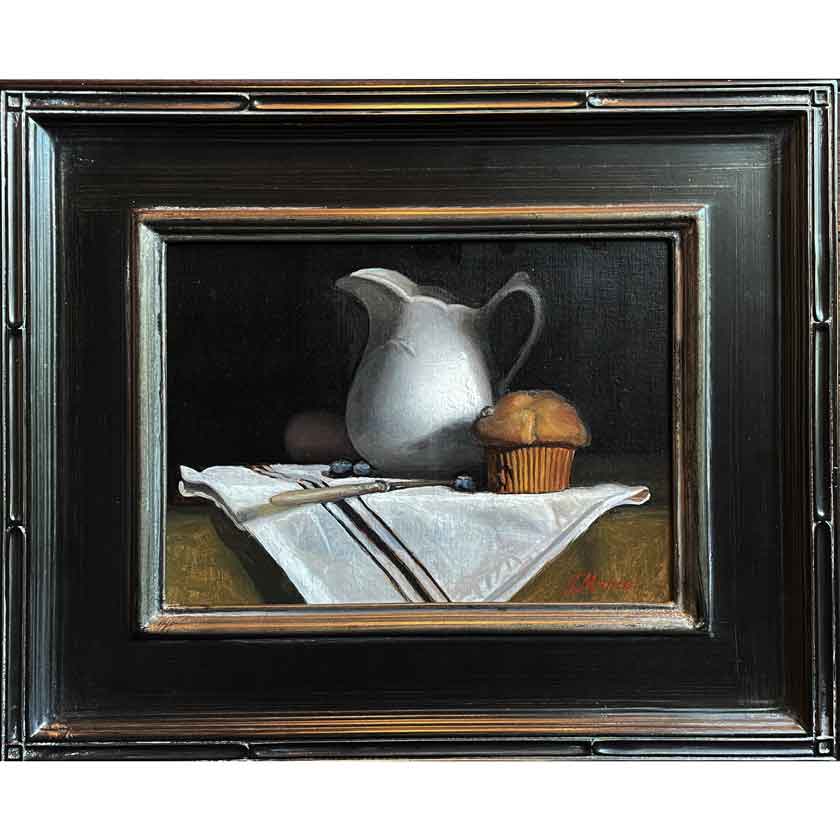Checking out All Concerning Oil Paints: An Overview to Recognizing Their Appeal and Worth
Oil paintings have actually astounded target markets for centuries, supplying a look right into the creative proficiency of various ages. Their abundant history is linked with cutting-edge strategies and extensive emotional expression. Recognizing the materials and approaches behind these art work can boost admiration. Furthermore, the market for oil paints provides possibilities for collectors and investors alike. As one explores this fascinating globe, the inquiry occurs: what makes an oil painting really beneficial?
The History of Oil Painting: A Journey Via Time
Oil painting has roots that date back to ancient times, it absolutely thrived during the Renaissance, when musicians uncovered its adaptability and rich color possibility. Early instances can be traced to the 7th century, with strategies evolving notably across cultures. The medium came to be popular in Northern Europe in the 15th century, especially via the jobs of artists like Jan van Eyck, that spearheaded its usage for detailed realistic look and dynamic colors. This period marked a separation from tempera paints, permitting better deepness and structure. As oil paint spread, it influenced many artists, causing masterpieces by popular figures such as Leonardo da Vinci and Rembrandt. The tool's tradition continues, shaping the art globe well right into modern-day times.
Recognizing Oil Repaints: Materials and Techniques
As artists discover the world of oil paints, they come across a diverse variety of materials and methods that specify this medium. The key components of oil paint consist of pigments, which supply color, and drying out oils, such as linseed, that bind the pigments and facilitate application. Various ingredients can modify the paint's texture and drying time, boosting versatility. Strategies like glazing, where clear layers are developed, and impasto, which includes applying thick paint, permit for various visual results. Additionally, using brushes, palette blades, and even fingers can develop special structures and coatings. Recognizing these strategies and materials makes it possible for musicians to totally share their creativity and attain the wanted effect in their art work.
The Duty of Shade in Oil Paintings
Shade plays a critical function in oil paintings, affecting both visual appeal and emotional vibration. Understanding shade theory essentials, including the relationships between shades, can enhance a musician's capacity to communicate state of mind and atmosphere. In addition, grasping shade mixing techniques permits greater depth and richness in a paint's combination.

Color Concept Fundamentals
Recognizing shade concept is essential for musicians functioning with oil paints, as it develops the structure for developing aesthetically appealing and harmonious compositions. Shade theory includes the research of exactly how shades engage, the shade wheel, and the connections between key, second, and tertiary shades. Artists use complementary colors to improve contrasts and produce prime focus, while similar shades promote unity and cohesiveness within a piece. In addition, the concepts of cool and cozy shades affect the assumption of depth and space in a paint. Realizing these concepts permits artists to manipulate shade properly, assisting the viewer's eye and connecting their intended message. Mastery of shade theory eventually enhances a musician's capability to share emotions and ideas through their job.
Psychological Impact of Shade
The psychological effect of color in oil paintings plays a crucial role in how viewers link and regard with artwork. Shades stimulate specific sensations and moods, influencing the audience's emotional state. Warm shades like oranges and reds can develop a sense of warmth and power, while awesome tones such as blues and greens commonly stimulate calmness or self-questioning. Artists purposefully select color combinations to improve narrative components, directing the target market's psychological trip. The saturation and comparison of shades better magnify these effects, attracting focus and creating focus. Ultimately, the interaction of shades in oil paints not just improves their aesthetic appeal but also functions as an effective medium for psychological expression, enhancing the viewer's experience and analysis.
Shade Mixing Techniques
While lots of facets of oil paint add to the total structure, grasping color mixing strategies is important for attaining preferred effects and depth. Color blending can be come close to via different techniques, including the additive and subtractive procedures. Additive blending includes incorporating shades of light, while subtractive mixing relies upon pigments, where shades mix to produce brand-new shades. Artists commonly utilize a restricted combination to produce harmonious works, comprehending the partnerships between primary, secondary, and tertiary colors. Techniques such as glazing and scumbling better boost depth and luminance. By masterfully blending shades, a musician can evoke emotions, create prime focus, and achieve a feeling of realistic look, inevitably raising the paint's psychological and visual influence.
Famous Oil Painters and Their Iconic Functions

Famous for their mastery of color and technique, oil painters have actually developed a few of one of the most renowned artworks in background. Prominent musicians like Vincent van Gogh captivated target markets with his emotive brushwork in "Starry Night," while Claude Monet's "Impression, Daybreak" laid the foundation for Impressionism. Leonardo da Vinci's "Mona Lisa" continues to be an enduring sign of imaginative wizard, showcasing his ability in capturing human expression. Rembrandt's "The Evening Watch" illustrates his cutting-edge usage of light and shadow. Other significant numbers include Pablo Picasso, who transformed modern-day art with his bold trial and error in jobs like "Les Demoiselles d'Avignon," and Georgia O'Keeffe, whose dynamic depictions of landscapes and blossoms assisted specify American modernism. Each musician's unique design added greatly to the oil painting landscape.
Just how to Examine the Top Quality of an Oil Painting
Examining the high quality of an oil paint entails a cautious assessment of workmanship techniques, in addition to an evaluation of color and make-up. Observing brushwork, layering, and the application of paint can expose the musician's skill degree. Additionally, the interplay of shades and the overall arrangement of components add significantly to the painting's aesthetic value.
Assessing Craftsmanship Strategies
A thorough analysis of craftsmanship techniques is essential for figuring out the top quality of an oil painting. Critics ought to initially check out the application of paint; thick, distinctive brushstrokes may suggest an experienced hand, while extremely consistent applications could indicate a lack of deepness. oil paintings for sale. The layering technique is also essential; the presence of lusters and differed density can enhance luminosity and complexity. Furthermore, the top quality of the products made use of, such as the canvas and pigments, plays a significant function in durability and general visual. Attention to information in components like edges and shifts in between colors mirrors the artist's dedication to their craft. Ultimately, these techniques contribute to the painting's psychological influence and market price, functioning as indicators of the artist's skill and intent
Examining Color and Make-up
While evaluating the quality of an oil paint, one need to concentrate on the interaction of shade and structure, as these elements are fundamental to the artwork's general effect. Shade selections can evoke emotions and establish state of mind; as a result, the musician's combination must be checked out for harmony and contrast. A well-balanced structure directs the visitor's eye and produces a feeling of unity. Artists typically utilize methods like the guideline of thirds or leading lines to enhance visual interest. In addition, using light and shadow can add depth, enhancing the three-dimensionality of the painting. Eventually, a successful oil paint marries color and make-up, involving the audience and inviting a deeper recognition of the artist's vision and technique.
Taking care of and Preserving Oil Paintings
Correct treatment and conservation of oil paints is important for keeping their honesty and durability. To protect these artworks, it is important to show them far from straight sunlight, which can trigger fading and staining. Preserving a steady atmosphere with controlled temperature level and humidity additional help in preventing damages. Cleansing ought to be done carefully using a soft, dry cloth, preventing any kind of rough chemicals that could damage the paint or varnish. Normal evaluations for signs of damage, such as splitting or flaking, are advisable. When moving or storing oil paints, correct extra padding and framework are essential to prevent physical injury. Ultimately, attentive treatment adds to the visual appeal and worth of oil paints with time.
The Marketplace for Oil Paints: Collecting and Investing
Understanding the marketplace characteristics for oil paints is important for capitalists and collectors alike. The value of these art work is influenced by different elements, consisting of the musician's online reputation, historic importance, and existing patterns. Enthusiasts frequently look for items that reverberate directly while considering potential recognition in worth. Auctions and galleries work as key places for trading, with costs fluctuating based upon demand and rarity. Purchasing oil paintings oil paintings for sale requires study right into the market, as well as an understanding of credibility and provenance. In addition, arising artists may provide opportunities for significant returns, while established names can command high costs. Overall, a calculated strategy to accumulating can generate both aesthetic pleasure and financial incentives.

Often Asked Inquiries
What Are the Environmental Impacts of Oil Painting Products?
The ecological impacts of oil paint materials include the release of unpredictable natural compounds (VOCs), unsafe waste generation, and resource removal for pigments. These factors add to air pollution and eco-friendly destruction, raising problems among eco conscious artists and customers.
Exactly How Do Different Canvases Influence Oil Paint Results?
Various canvases influence oil paint results significantly. Surface, absorbency, and appearance quality can change paint application, drying times, and shade vibrancy. Artists usually choose details canvases to achieve wanted effects and enhance their artistic expression.
Can Oil Paintings Be Brought Back if Harmed?
If harmed, Oil paintings can without a doubt be restored. Professional conservators utilize different techniques to fix splits, tidy surfaces, and address staining, guaranteeing that the artwork keeps its original appeal and value for future generations.
What Are the Indicators of an Original Oil Paint?
The signs of an initial oil paint consist of visible brush strokes, texture variants, and an unequal canvas weave (oil paintings for sale). Furthermore, credibility might be validated with provenance, trademarks, and the presence of a varnish layer unique to oil mediums
Just How Has Modern Technology Influenced Modern Oil Paint Techniques?
Technology has actually significantly affected contemporary oil paint strategies by introducing digital devices for planning, improved materials for appearance and long life, and on-line platforms for sharing and marketing art, consequently increasing artists' imaginative opportunities and audience reach. Oil paint has origins that date back to old times, it truly flourished during the Renaissance, when artists uncovered its convenience and rich color possibility. The psychological effect of shade in oil paintings plays an important role in how viewers perceive and link with art work. While numerous aspects of oil paint add to the total structure, grasping shade blending strategies is crucial for accomplishing desired impacts and depth. Evaluating the quality of an oil painting includes a careful assessment of craftsmanship strategies, as well as an evaluation of shade and structure. While reviewing the high quality of an oil paint, one need to focus on the interaction of color and composition, as these elements are fundamental to the artwork's general effect.